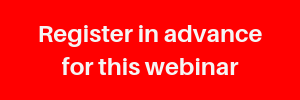Productivity Hack: The 53-Minute Master Plan
“You were born to win, but to be a winner, you must plan to win, prepare to win and expect to win.” - Zig Ziglar, author See You at the Top
I’m always looking for productivity hacks – more efficient ways to run anything – from strategic planning and training and education programs to 360 reviews – and I’ve created a new one to share with you. It’s about creating your Master Plan in an hour or less.
Even though we all know good planning is a vital step to being productive and successful, most people have a time carving out the time to do it. So I created this one for the module we teach on Planning and Productivity.
Our Master Plan framework is a spectacular, concise document that integrates every important area of Work, Self and Life, as well as core values and sweet spots.
It gets to the heart of what you want to achieve in life and what really matters, how to be twice as good in three years, your goals for the year and an execution plan to get you there.
In our Planning and Productivity session, we walked participants through the two-page document and gave them between 60 and 120 seconds to complete each section.
In less than half an hour, we had completed a reflection of a whole year – greatest accomplishments and learnings, Passion Ratios and Goals, and what needed to change - and had created a Master Plan for Work, Self and Life. The Quarterly plan for short term goals was then completed in another 20-ish minutes.
Of course, in a one-on-one setting you can do a more thorough, concise job - I’ve done it in 53 minutes.
– or you can spend a day on it.
The information is already in your head so it’s about taking the time to focus on what’s most important to you, to crystallize your thoughts, and then you can get into action to bring your plan to life.
When you dedicate time to sit still, you can do amazing work, with great clarity in a very short time.
The Challenge
- If you want to do this on your own, complete the template in Chapter17 of Your Oxygen Mask First or download it here
- If it helps, grab a buddy to do it with you.
- Set the clock and focus. Just make sure your Master Plan gets done.
WANT TO LEARN MORE?
Join Us for the FREE 53-Minute Master Plan Webinar:
Tuesday June 25, 2019 at 12:00pm PT
One-hour webinar – recorded
Can’t make the live event? Register and we’ll send you a link to the webinar recording to watch at your convenience.
Call Us:
If you want help with one of our coaches, we guarantee a reasonable draft in under an hour - and can provide additional support every month to keep you on track.
Master Productivity Using the Ivy Lee Method
“Create a definite plan for carrying out your desire and begin at once, whether you ready or not, to put this plan into action.” - Napoleon Hill, Author Think and Grow Rich
As part of the monthly Leadership Education program we do, we most recently taught a Planning and Productivity module, one of 18 we offer – either in person or via Zoom for leaders in multiple locations.
Planning and pre-planning are two of leadership’s most fundamental and under-utilized skills, so we started with the basics by reviewing Chapter 17 in my book.
If you really want to enjoy enduring success for your Work, Self and Life, you need to use the Master Plan template, and consciously think about how you decide how much energy on each area to succeed.
When we got down to productivity, I thought about the many conversations I’ve had with leaders, and my own experiences, and was reminded of a story from the great book Think and Grow Rich (first published in 1923) by Napoleon Hill. He talked about the brilliant PR/productivity consultant Ivy Lee, known as Mr. Productivity, who was once compensated $25,000 - the equivalent of $400,000 today – by steel magnate Charles M. Schwab.
In 1918 Schwab, one of the richest men in the world, was constantly looking for an edge over his competition. So, he called Lee and asked him what he would do to increase the efficiency of his team.
Lee asked to spend just 15 minutes with each of Schwab’s executives. When Schwab asked how much it would cost him, Lee replied, “Nothing – unless it works. After three months, you can send me a cheque for whatever you feel it’s worth to you.”
The Ivy Lee Method
As he met with each executive, Lee explained his simple method:
- At the end of each day, write down the six most important things to accomplish the next day. And no more than six
- Prioritize them in order of importance
- On arrival the next morning, focus only on the first task. Work until it’s done then move on to the second
- Complete the list, working in the same fashion. At the end of the day, move any unfinished items to the next day’s list
- Repeat every day.
After three months, Schwab was so pleased with the results that he presented Lee with a cheque for $25,000.
A Toad + Five
I’ve used Lee’s method ever since I heard about it with one modification which I call Lick Your Toads (see Chapter 5 of my book). Make your #1 task the one you’re most likely to put off because you dread doing it, to free your mind and energy for bigger and better things. Don’t keep putting it off to the next day.
So, your list is a Toad + five.
The Challenge
- What would happen if everyone in your company made a good list of their six most important priorities and made sure they got done every day – versus responding to the world of email and text?
- If you are already doing this, you know the power of it
- If you’re not, give yourself a nudge to start today and share this idea with your team.
Let me know what happens – and if you’d like one of our team to teach you our module Planning and Productivity, let us know.
Add a 6th Rock: Company Culture
“Your culture is so powerful that it actually helps employees decide to stay or resign. Are you and your culture worth staying around?” - Jim Collins
A great part of the methodology we use for the strategic planning we regularly do, for growing companies around the world, is to have a vision for the company, long- and short-term goals, and quarterly deliverables for both the company and its key leaders.
And we’re lucky to work with companies over 5, 10 or 15 years to see how their planning and execution evolves and where it falls short.
One of the big areas that needs attention is around culture. When a company starts a planning process, people get excited about their vision, purpose, core values and culture, and enthusiastically set BHAGs (Big Hairy Audacious Goals, as Jim Collins calls them).
But over time, company culture fades into the background and quickly becomes wallpaper, as the focus turns to productivity – and then we wonder why people don’t want to stay. In the end, the owner or founder doesn’t like what the company has become.
As a company grows, the key is to continually sculpt the culture into what you want it to become. You can put any group of people together but if they don’t have common thread sewing them together, they’ll pull apart and go off in their own direction.
Come Alive Every Quarter
It’s not rocket science – it’s about paying attention and doing something new or different to breathe life in the culture.
Jim Collins’ research confirms the value putting some extra energy into reminding people of the values and purpose of the organization. So, I suggest adding to your five quarterly planning goals with a 6th Rock to breathe life into your culture:
- It could be shooting a video of people engaged in fun activities together
- Or ask everyone to read an article that reinforces your Core Values, then get together to talk about it
- Create a Core Values award to recognize people who exemplify them
- Get out and do an activity together.
And there’s a hundred other possibilities.
It’s about being thinking, conversing and relating to each other around the most important principles of your business.
By the way, one of the worst ideas is the poster. It becomes wallpaper in a few hours or days and does nothing.
We have endless ideas from the hundreds of great examples we’ve seen over the years, so if you need help, let us know.
The Challenge
If a great company culture is an important part of your strategy…
- What have you done to reinforce it in the last 90 days?
- How can you make sure culture stays a part of strategic plan process?
Executive Team Alignment
“Authenticity is the alignment of head, mouth, heart and feet – thinking, saying, feeling, and doing the same thing – consistently. This builds trust, and followers love leaders they can trust.” - Lance Secretan, Author of Inspire! What Great Leaders Do
Strategy or execution: Which is more important?
If you get a bunch of leaders in the room debating about what is more important - strategy or execution - it’s going to be lively. If you get a bunch of consultants, it’ll be even livelier - and you’ll hear all kinds of theories.
More important than either one, I say, is alignment.
You can have an amazing strategy that gives you a competitive advantage - but if it’s not well executed there’s no benefit. You can have a mediocre strategy that’s executed perfectly - and you’re not going to get the full result either.
So when we go into a new company to help improve performance we always start with alignment. Whether it’s around a good strategy or executing the right things, what truly matters is that all of the key people in the organization are clear on what needs to happen - and are spending a notable chunk of their time working on it.
Alignment helps a strategy to come to life, and helps executives to work in harmony. And a good place to start is to get agreement on what’s not working – or on what the biggest challenges are in the company. Those are things most people agree on.
As we go through a strategic planning process with a company - whether we are focused on strategy, strength of the team, or financials – our goal, bit by bit, is to get everyone on the same page.
Every decision you can get people to agree on as a team - creates additional team alignment.
“We’re great at this…we’re horrible at that.”
“This is a wonderful opportunity…this is a waste of time.”
“This project was a success and why…or a failure and why…or an expensive learning experience and why.”
One neat package
I had an amazing experience at the quarterly meeting of one of the companies we’ve been working with…everything made complete sense!
- When the CFO presented the financials everyone agreed on the numbers for where we were in the business.
- When the CEO reviewed the goals for the quarter, we had crystal clear updates on where we were at, where we slipped and what we needed to do to recover.
- Every single member of the leadership team reported on KPIs, on how they were doing and where they should be, and on their individual priorities for the quarter.
The whole thing aligned into one neat package. Everyone knew their part in moving the company forward. Everyone knew how he or she had performed because, in this review process, they assessed themselves.
In fact, the CEO of the business said, “This makes me even believe we don’t need a performance review process. This is our performance review. If we, as a team, deliver on our priorities for the quarter - and you, as individuals, each deliver on your KPIs and priorities - then we are all amazing. If one of us isn’t doing well, it’s pretty darn apparent.”
The point is this: In your company your strategy and execution do need to be good. But most importantly you need to have team alignment throughout the entire company so that people are obviously connected to your strategy - and people are obviously executing it in a way that works - together.
Then when things don’t go as planned – because they never do – you can quickly identify and adjust, and then improve the plan to be more effective.
Do You Have the Professional Stamina To Go the Distance?
“I got the stamina. I can close.” - Michael Phelps, Olympian
“There is no problem that doesn't have some underlying need for more optimism, stamina, resilience and collaboration.” - Jane McGonigal, American designer
“Resilience is all about being able to overcome the unexpected. Sustainability is about survival. The goal of resilience is to thrive.” - Jamais Cascio, futurist
About a month ago, I did a kick-off session for the Executive Education Program we offer - based on my book, Your Oxygen Mask First - for T&T Supermarkets, Canada’s largest Asian retailer.
At one point, CEO Tina Lee offered a great perspective on our work saying that what we really do is help people to build professional stamina.
I thought that was a great insight. Just like the physical stamina that athletes need in order to play well, high-performers need to build strong emotional stamina or resilience to endure and enjoy the rigours of a long-term life in leadership. This only comes from developing the habits that help you to thrive - for Work, for your Self and for your Life.
Stamina is something Tina has in spades. Brought up in her family business, she watched her mother Cindy Lee grow one supermarket into a thriving chain of 23 across the country, with 5000 employees. She earned her MBA at UCLA before joining the business as Director of Strategy and Operations and was instrumental in negotiating the $225 million sale of T&T to Loblaws. When her mother retired in 2014, she assumed leadership of the company as CEO. Tina is a member of Young Presidents Organization (YPO), a Senior Advisory Board Member of the North American Association of Asian Professionals, and a member of the Canada-US Council for the Advancement of Women Entrepreneurs and Business Leaders (appointed by the Prime Minister’s Office). Oh, and she’s also the mother of three children.
The Challenge
- Complete a Your Oxygen Mask First Self-Assessment to determine your stamina today
- How do you rate?
- What do you need to do to strengthen it?
Move Forward by Finding the Sweet Spot between Fear and Anticipation
“There is no terror in the bang, only in the anticipation of it.” - Alfred Hitchcock, filmmaker
Have you ever stopped yourself from doing something you wanted to do because you were scared or concerned that the risk was greater than the reward?
You’re not alone. Many of us get motivated - or not - based on how we feel going in to something, rather than how we’re going to feel after. And that’s not the right measure.
I talked to a fellow keynote speaker recently, about finding that sweet spot between fear and anticipation. We agreed that if we let feeling nervous about an upcoming speech stop us, we’d never get to do what we love.
The key to move forward is to find a way to connect to that feeling of satisfaction, exhilaration or victory you’d get after an accomplishment, before you do it - and then let it carry you through your doubts and fears. Try the following:
- Visualization – Picture yourself doing the activity flawlessly and the feeling you have when it’s done well. Lots of athletes and executives master this
- Write a story – Using the present tense (I am energetic, focused and deliver my speech flawlessly), write down what you are doing and how you feel
- Draw a picture or create a vision board – Create something that reminds you of what success looks like
- Talk to someone whose been there – Ask them about their experience. Not just what they did or how they did it but how they felt.
In its simplest form, the fastest way to get somewhere is to already be there, in your mind.
The key is to get your mind past the obstacle that is holding you back and to look at the decision from the other side.
The Challenge
- Where do you feel stuck now about a decision to make or a goal to achieve?
- How can use one of these techniques to help you to see what the finish line looks like, or to push you towards it, more quickly?
We have a team of excellent coaches who are able to help you with overcome your challenges and work on your mindset. Reach out to us if you ever need assistance.






